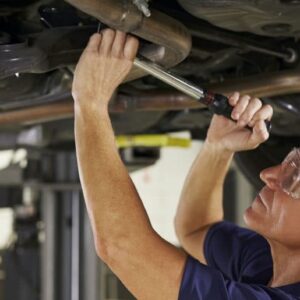Steel is a metal that is modified more than perhaps any other type. Its primary composition is made of iron with carbon. The ratio of these two elements and the addition of others will turn steel into a variety of other grades and alloys, which each offer unique advantages. And while many people are familiar with variations that include stainless steel and tool steel, a variety referred to as spring steel is less well known.
Spring steel can raise a lot of questions, partly because it’s not just one simple grade. Spring steel actually includes all types of alloys. In general, they are made with medium to high levels of carbon and minimal levels of manganese, which facilitates high yield strength. This means that spring steel can be bent and compressed under force and still retain its shape. It’s the metal used to make spring washers for industrial applications and suspension systems for automotive settings, but that’s only the beginning.
Like stainless steel, spring steel includes a range of different grades with special properties. The following is a look at some of the most common varieties, their capacities, and common uses.
Blue Tempered Spring Steel
Blue tempered spring steel, or polished spring steel, is a high carbon alloy that’s used to make extra flexible materials, like steel tape and springs needed for high deflection. It offers a yield strength of 60-75 ksi (kilos per square inch). Blue tempered spring steel includes SAE/ASTM grade1095. This material is aptly named, as it will usually feature a blue tint or bright polish.
Scaleless Tempered Spring Steel
Scaleless tempered spring steel is similar to blue tempered stainless steel but it contains less carbon. This makes it a better choice for springs and mechanisms that need to function in a locking or snapping mechanism, such as trap triggers. It is categorized under SAE/ASTM grade 1074/1075. It offers a yield strength of 62-78 ksi.
Annealed Spring Steel
Annealed spring steel is considered a general-purpose steel because it offers a good combination of stability and flexibility. It’s sturdy enough to be used to make annealed spring steel washers, shims, and various types of disc springs. Annealed spring steel offers modifiable tension that prevents rattling and deformation in many settings that require deflection as well as support. Spring steel washer manufacturers will use this type of steel for Belleville and wave washers. Annealed spring steel is categorized as SAE/ASTM grade 1070.
Spring-Tempered Stainless Steel
Spring-tempered stainless steel combines the high yield strength of other spring steel grades with added corrosion resistance. It is also called 301 spring-tempered stainless steel. This alloy is a good choice in applications that might be subjected to potentially corrosive circumstances, such as high humidity, temperature fluctuations, or exposure to the elements. Spring-tempered stainless steel has a yield strength of 147 ksi.
ASTM A228 Steel
A228 steel is also sometimes simply called piano wire or music wire since this is its most common application. It is made from a tempered high-carbon steel with extremely high tensile strength. It can withstand continuous impact, compression, and twisting without loss of strength or structural integrity. ASTM A228 can be made to extremely thin tolerances and is used for special effects as well as for surgical materials, cutting tools, high-performance fishing lures, lightweight springs, and various specialty applications. This grade is also categorized as SAE 1080 and will exhibit a tensile strength range of 380-425 ksi.

